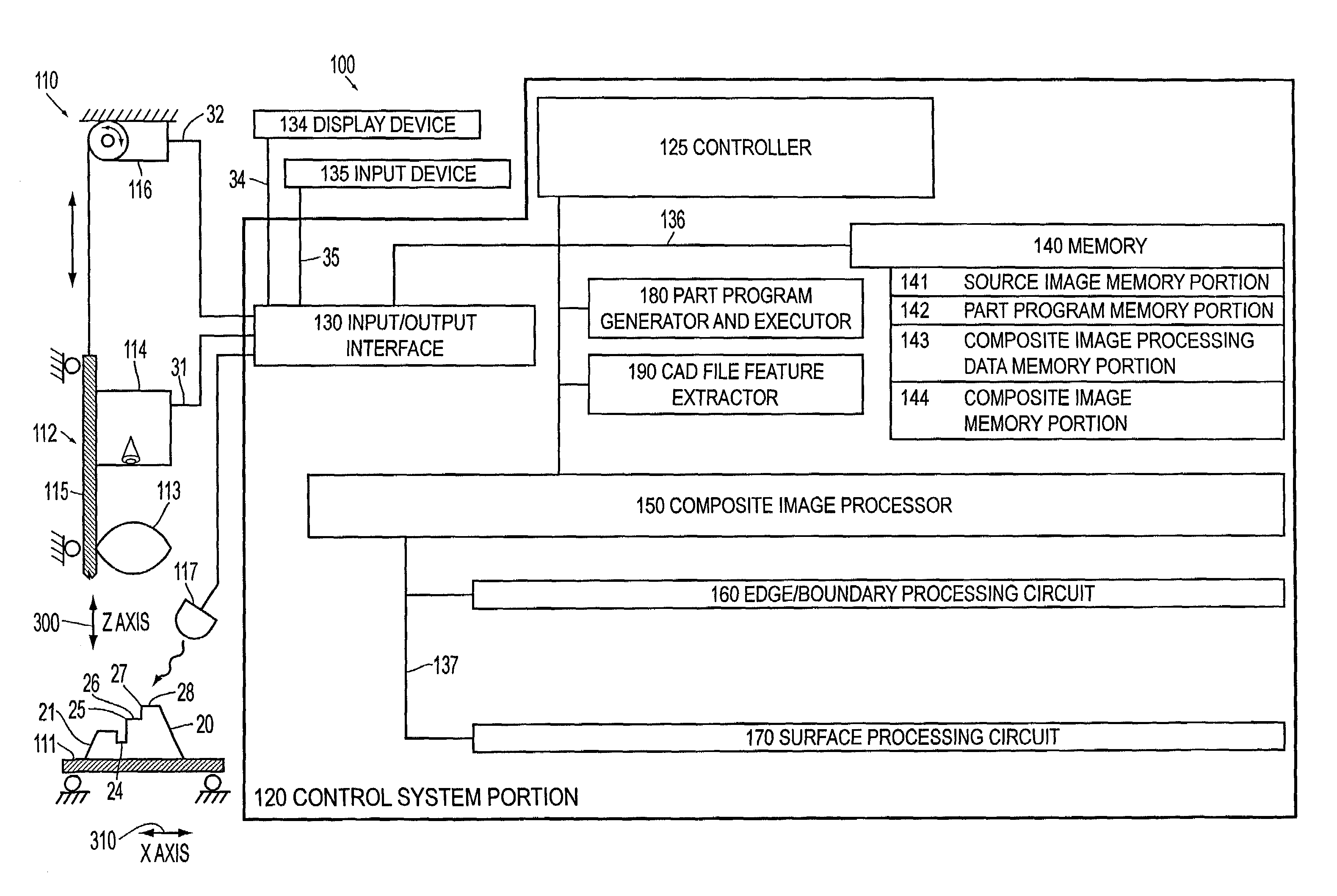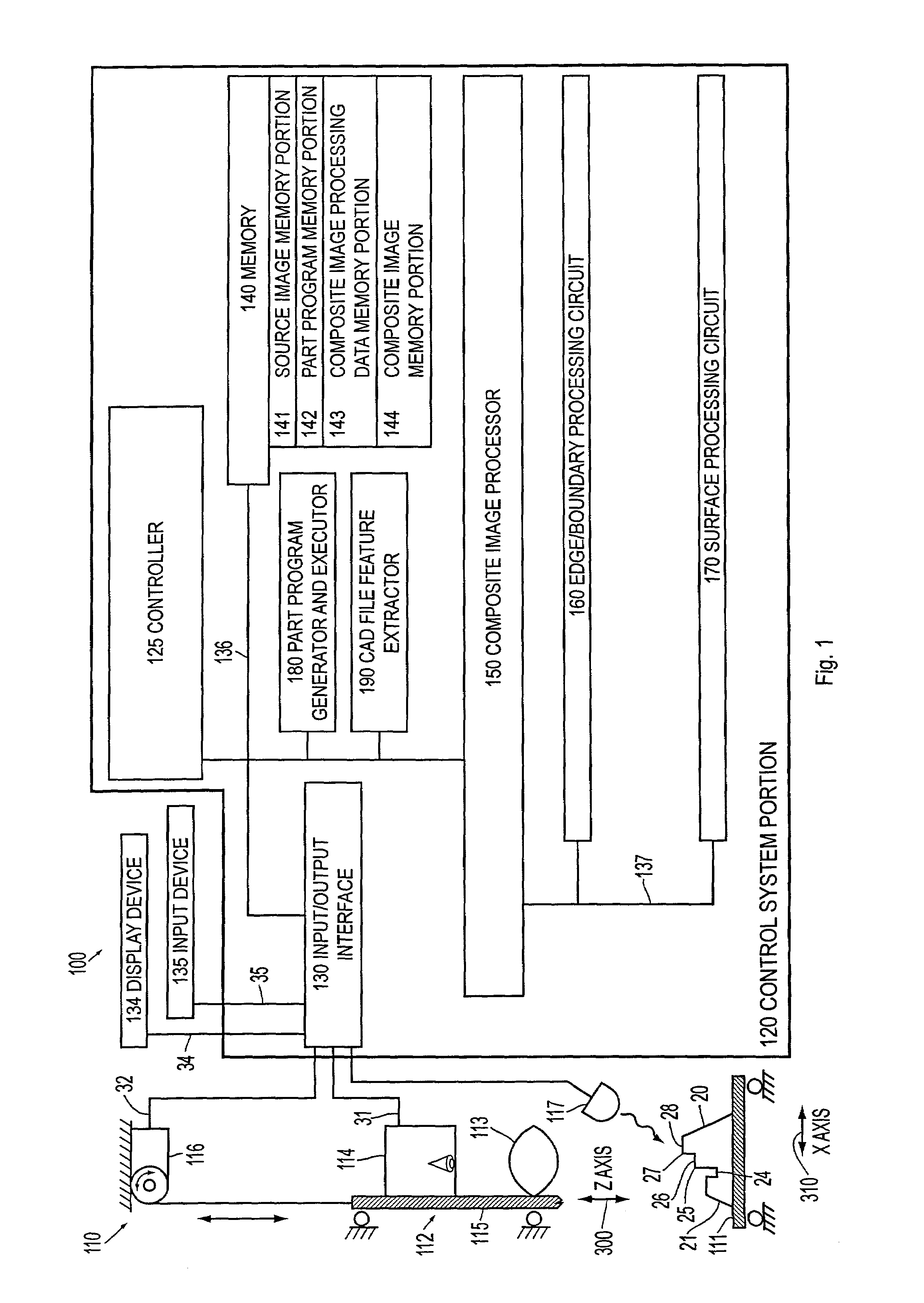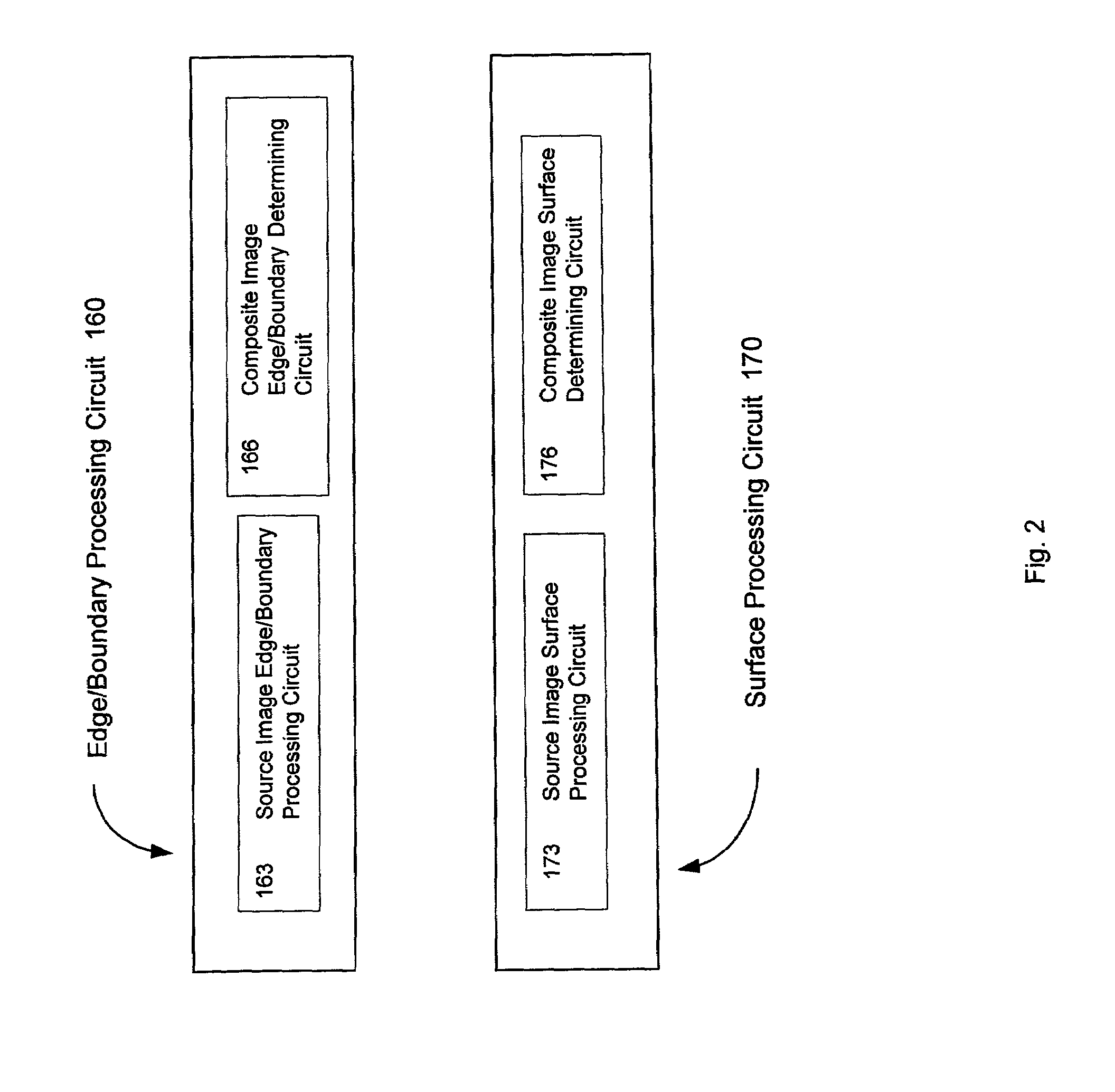Systems and methods for constructing an image having an extended depth of field
a technology of depth of field and image processing system, which is applied in image enhancement, image data processing, instruments, etc., to achieve the effect of preserving detail, balancing efficacy and throughput time, and reliable results
- Summary
- Abstract
- Description
- Claims
- Application Information
AI Technical Summary
Benefits of technology
Problems solved by technology
Method used
Image
Examples
Embodiment Construction
[0037]For simplicity and clarification, the operating principles, and design factors of various exemplary embodiments of the systems and methods according to this invention are explained with reference to one exemplary embodiment of a vision system 100, as shown in FIG. 1. The basic explanation of the operation of the vision system shown in FIG. 1 is applicable for the understanding and design of any vision system that incorporates the systems and / or methods of this invention. Although the systems and methods of this invention are described in conjunction with this specific vision system 100, the systems and methods according to this invention can be used with any other known or later-developed vision system.
[0038]FIG. 1 shows a vision system 100. As shown in FIG. 1, the vision system 100 includes a vision system components portion 110 and a control system portion 120. The control system portion 120 includes elements, including a composite image processor 150, which constitute a com...
PUM
 Login to View More
Login to View More Abstract
Description
Claims
Application Information
 Login to View More
Login to View More - R&D
- Intellectual Property
- Life Sciences
- Materials
- Tech Scout
- Unparalleled Data Quality
- Higher Quality Content
- 60% Fewer Hallucinations
Browse by: Latest US Patents, China's latest patents, Technical Efficacy Thesaurus, Application Domain, Technology Topic, Popular Technical Reports.
© 2025 PatSnap. All rights reserved.Legal|Privacy policy|Modern Slavery Act Transparency Statement|Sitemap|About US| Contact US: help@patsnap.com



